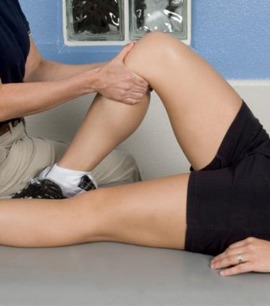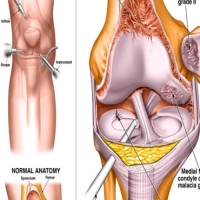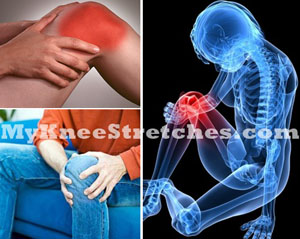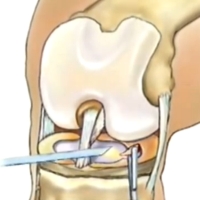Knee pain can come from many sources, but for many athletes, one type is often to blame. Medial collateral ligament injury, also known as MCL is a fairly common injury to the supporting tissues surrounding the knee. It is a painful disorder that is easy to recognize but possibly difficult to treat.
Causes of Medial Knee Pain
Medial collateral ligament injury is caused by injury to the inner part of the knee. This often occurs as a result of sports. Frequent movements to the knees and improper alignment make injury very likely to happen. It is also very common in developing youth. As their bodies are developing, the supporting tissues often cannot keep up with the rapid muscle growth.
The injury occurs when there is a tear in the ligament that connects the muscles to the knee cap. The tear can be complete or partial, but the results are the same. It causes the knee to painfully pop out of place when moved in certain directions.
MCL injuries are a very common source of knee pain because of the location of the ligaments. They also frequently occur with an ACL injury.
Signs and Symptoms
 There are many different signs of MCL, including noticeable pain in the knee. Specifically, someone with the injury may complain of knee pain; inner side or just deep under the knee cap. This is different than arthritis in the knee because unlike arthritis sufferers do not complain of stiffness.
There are many different signs of MCL, including noticeable pain in the knee. Specifically, someone with the injury may complain of knee pain; inner side or just deep under the knee cap. This is different than arthritis in the knee because unlike arthritis sufferers do not complain of stiffness.
Another difference between MCL and arthritis is the sensitivity to temperature. Arthritis sufferers often complain of increased symptoms when it is cold. With a medial collateral ligament injury, the weather is not a factor. Symptoms will persist regardless of the temperature.
The general symptoms of MCL are knee swelling, knee locking, pain and tenderness and knee instability. The amount of pain felt may vary based on the severity of the injury.
Understanding what kind of inner knee pain you have is an important step in getting an accurate knee pain diagnosis. In order to get diagnosed, a doctor may ask someone who thinks they have MCL to bend their knee or even take a MRI to determine if injury had occurred.
How to treat Medial knee Pain
There are many ways to treat medial knee pain, but most professionals agree that physical therapy is recommended. Physical therapy is a collection of procedures based on physical manipulations used to treat an ailment. The exact treatment procedure may vary and is based on the severity of the initial injury.
Some common physical therapy treatments include massage, ice therapy, heat therapy and exercise. Some practitioners may also use ultrasound technology to reach the deep inner knee pain that patients report. Ultrasound delivers sonic waves to the muscles, reducing some of the pain. Ice therapy is prescribed to reduce inflammation.
Other treatments for the knee injury include anti-inflammatory drugs as well as elevation of the affected knee.
Exercise is also an important step to recover from a MCL injury. For many people getting treatment for MCL knee pain, the thought of exercise is painful. It is however, necessary to strengthen the supporting muscles and prevent any further damage. The extra effort will go a long way to prevent future pain.
Prevention Steps
Proper alignment is the best way to prevent an injury that would cause medial knee pain. This can be done with strength training as well as proper coaching. Student athletes should pay close attention to their form when exercising to prevent any unnecessary injury.
For many, a MCL knee brace is an easy way to ensure the correct alignment. These braces hold the knee in a proper alignment and prevent further damage. If someone frequently suffers from medial knee pain, a brace might be an easy way to train the knee into the right spot while preventing further damage. Re-injury is common without proper re-strengthening.
A knee injury is a painful type of injury, but it is even worst when you are unable to see the damage. MCL is a common cause of knee pain for both young and old, but unfortunately it can be difficult to diagnose. With a doctor who is knowledgeable of the condition you can easily get a diagnosis done and be on your way to feeling better.




